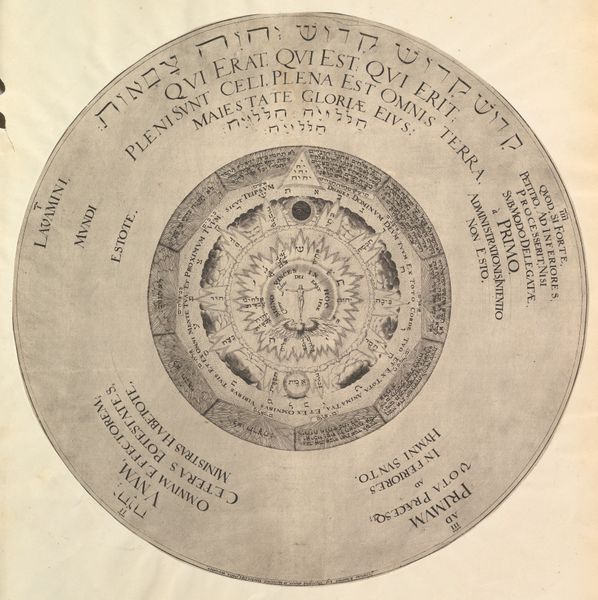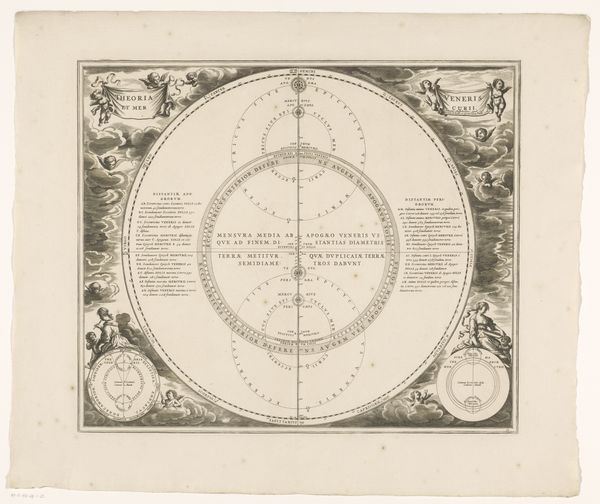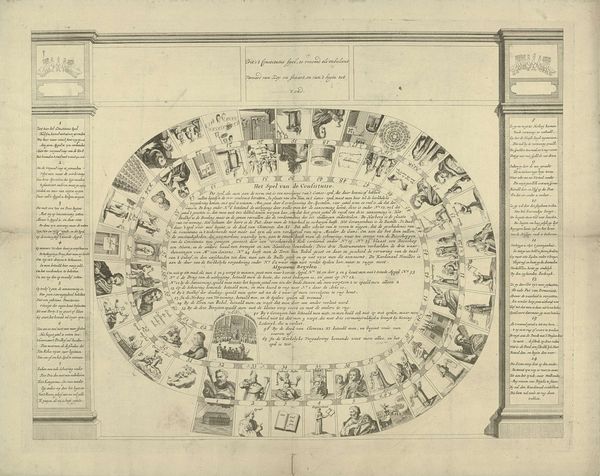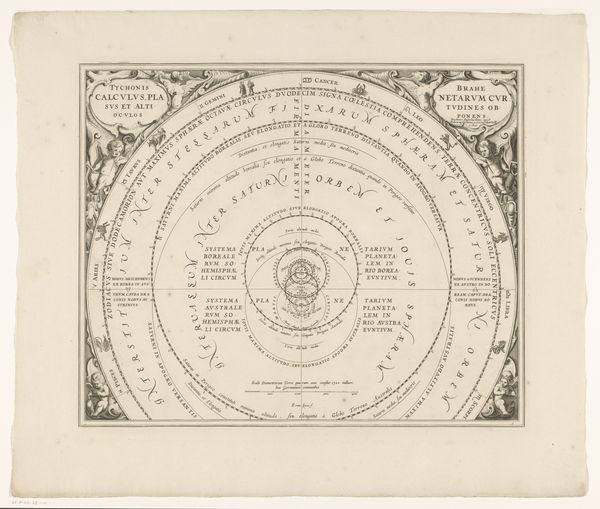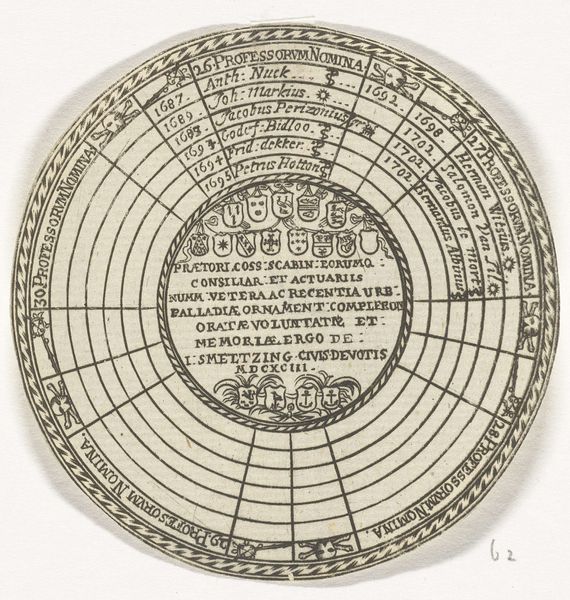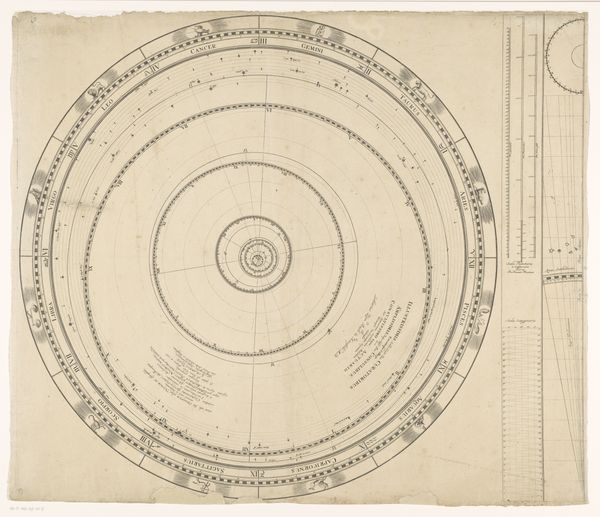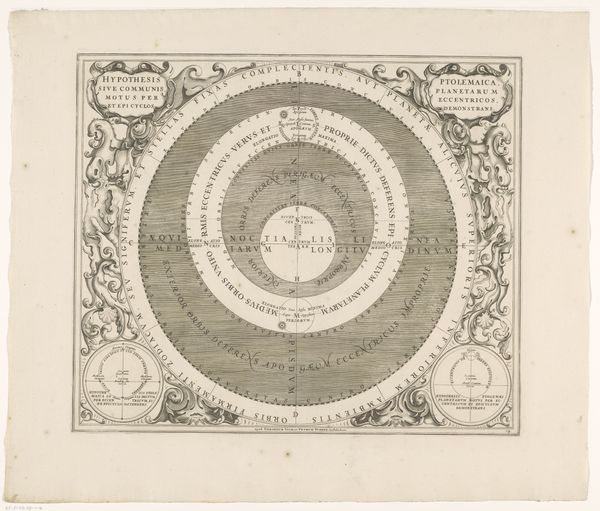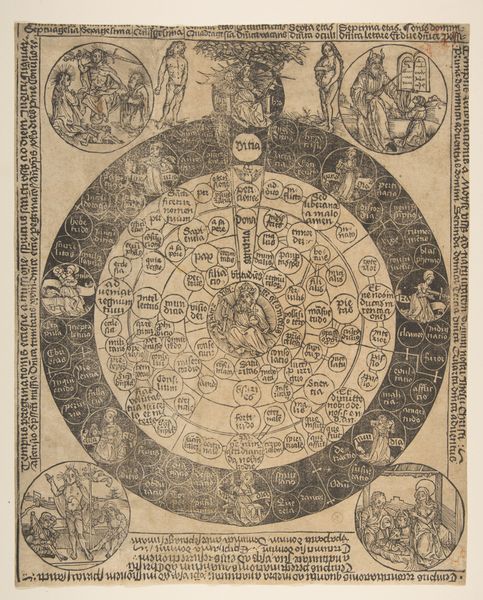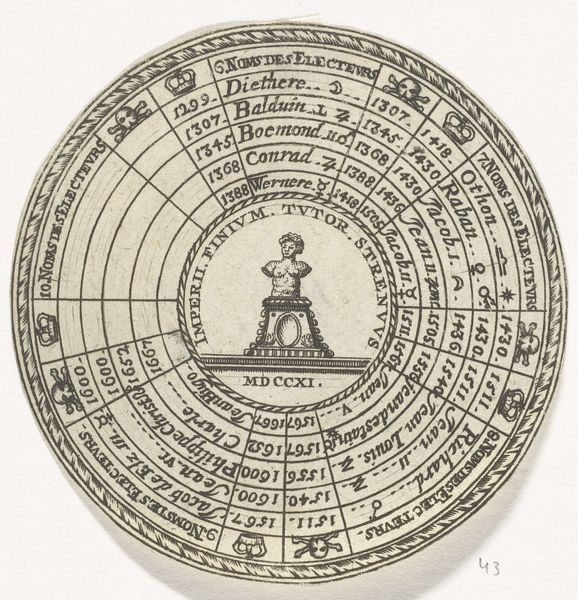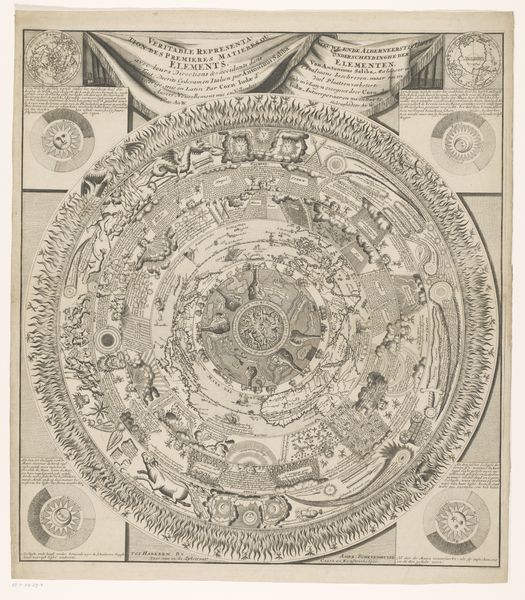
The Philosopher's Stone from Heinrich Khunrath, Amphiteatrum sapientiae aeternae 1535 - 1611
0:00
0:00
Dimensions: sheet: diameter 15 7/8 in. (40.4 cm)
Copyright: Public Domain
Peter van der Doort created this circular engraving, "The Philosopher's Stone," around the turn of the 17th century, a visual compendium of alchemical and philosophical concepts. At its heart, we find the caduceus motif, a symbol of intertwined serpents around a staff, which traditionally represents Hermes, or Mercury, the Roman god of commerce, eloquence, and messages. Here, in this alchemical context, the caduceus symbolizes transformation, balance, and the union of opposites necessary for creating the Philosopher's Stone. This echoes the ancient Greek concept of the soul as a chariot pulled by two horses, representing reason and emotion, requiring balance and harmony. Throughout history, we see variations of serpents and staffs signifying healing and knowledge, from the Rod of Asclepius to the biblical story of Moses's staff. These symbols are not static; they evolve, mirroring our collective yearning for understanding and mastery over the natural world. They tap into our deepest desires, stirring subconscious memories of humanity's quest for knowledge. This image serves as a potent reminder of the cyclical nature of symbols, constantly resurfacing and adapting across time.
Comments
No comments
Be the first to comment and join the conversation on the ultimate creative platform.

